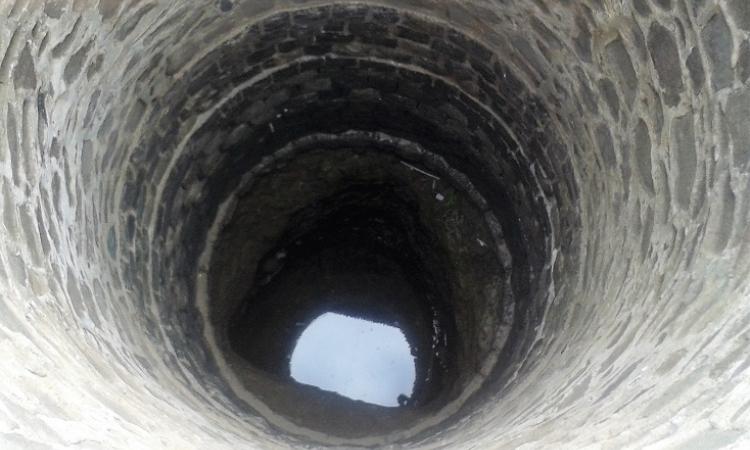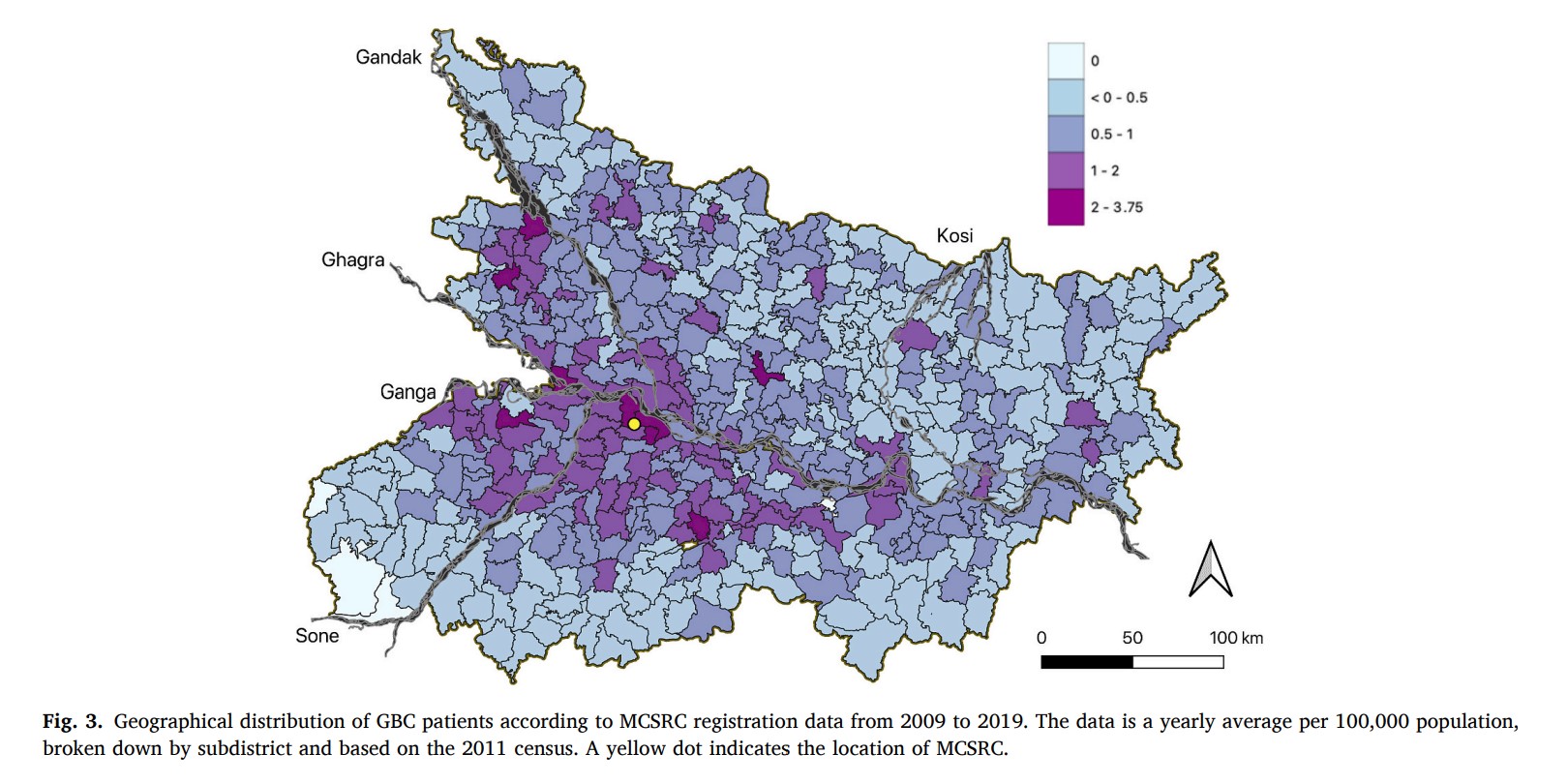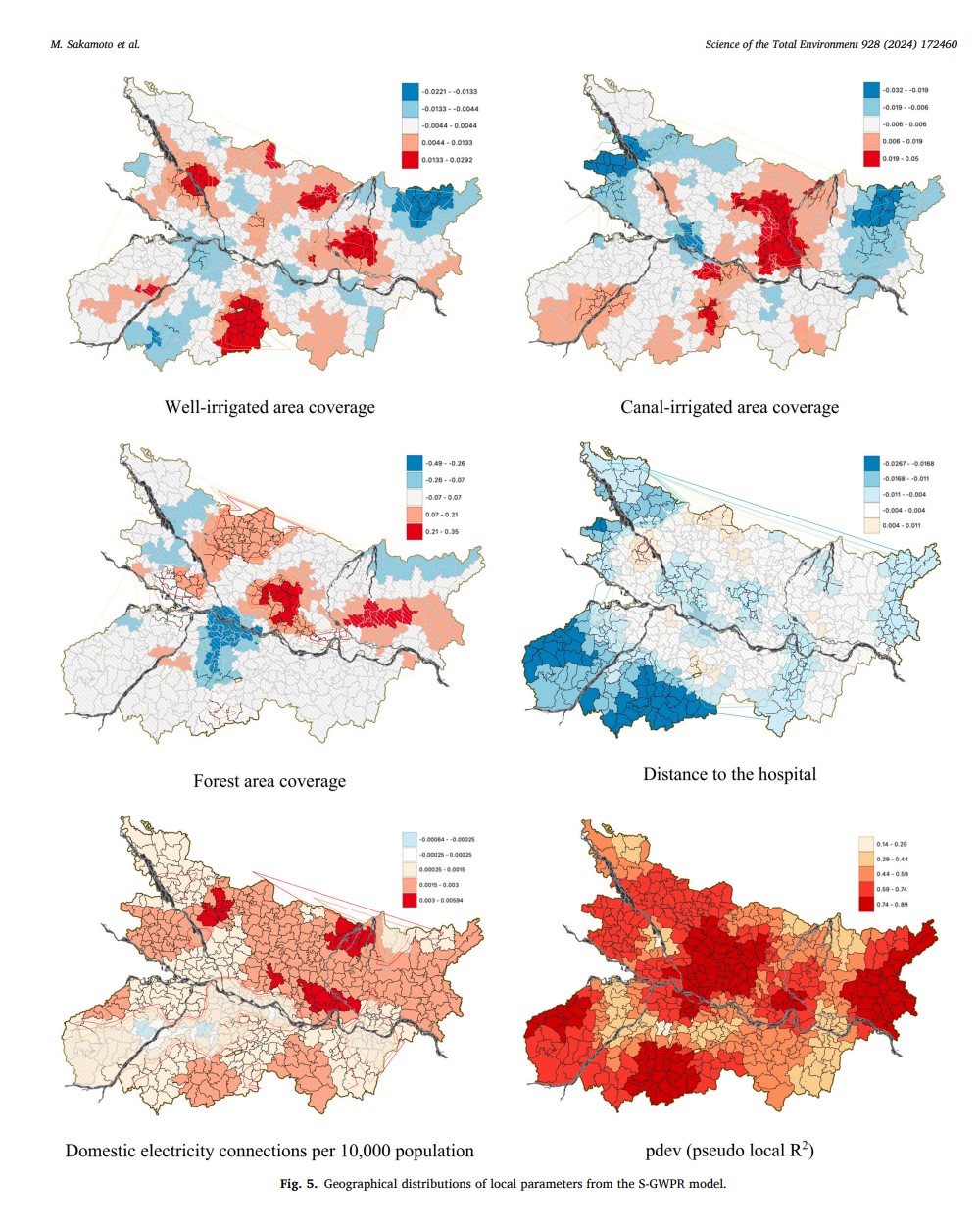
Rising gall bladder cancer in India
Gall bladder cancer (GBC) prevalence continues to be high in Northern India with an age-standardised incidence rate of 21.5. However, GBC patients often do not exhibit symptoms in the early stages and most patients are at advanced stages III or IV by the time the symptoms become noticeable. GBC is thus referred to as a ‘silent killer’ in the Gangetic basin. It is a difficult cancer to treat and understanding risk factors and preventive measures is crucial in reducing GBC morbidity and mortality rates.
The prevalence of GBC is rising in India, and it has been found to be the most common cancer among men and women in Bihar informs this paper titled 'Geo-spatial epidemiology of gallbladder cancer in Bihar, India' published in Science of Total Environment.
According to the registry of the Indira Gandhi Institute of Medical Sciences in Bihar, it is common among both men and women in Bihar and at the Mahavir Cancer Sansthan and Research Centre (MCSRC), it ranks as the second most common cancer among men and the third most common among women.

Risk factors for gall bladder cancer
Studies show that personal risk factors such as gallstones, obesity, chronic infection, genetic factors and environmental risk factors, such as contamination from industrial wastes, agricultural effluents, and human sewage, can act as risk factors for GBC. Studies have also explored the association between arsenic contamination in groundwater and GBC.
The World Health Organisation has set the permissible limit of 10 μg/L for inorganic arsenic concentration in drinking water. The Bureau of Indian Standards defines two limits for drinking water: 1) an acceptable limit, and 2) a permissible limit, applicable in the absence of alternative drinking water sources. Initially, both these limits were set at 50 μg/L according to IS10500:2003, but were were lowered to 10 μg/L as per IS 10500:2012, but the permissible level was later relaxed to 50 μg/L in a June 2015 amendment (BIS, 2015).
People consuming groundwater drawn from tube wells can get chronically exposed to arsenic levels and arsenic poisoning is known to lead to skin lesions, hypertension, ischemia, weakness, vascular and autoimmune disorders, arteriosclerosis, and neuropathies. These if ignored, can lead to cancers of the skin, bladder, lungs, kidney, liver, and prostate.
While there has been a substantial increase in GBC cases in Bihar, the root causes of these diseases leading to cancer development have not been explored.
Arsenic contaminated groundwater and gall bladder cancer: Is there a connection?
The paper discusses the findings of a study that investigated the geo-spatial epidemiology of GBC in Bihar, with a focus on arsenic and uranium in groundwater, and the incidence of GBC. The study used data from 8460 GBC patient registration records over an 11-year period at a single health center.
The Indian Government’s updated arsenic map in December 2022 finds that almost all districts of north Bihar are affected by arsenic contamination in groundwater. Two environmental variables arsenic and uranium found in the groundwater in the region, the area under irrigation in each geographical unit and the distance to the nearest hospital namely MCSRC were used in this study to explore the relationship between environmental factors and the prevalence of GBC.


The study found that:
- Arsenic and uranium concentrations in groundwater were not found to be significantly associated with GBC in this study. However, this could be due to the lower resolution of this data at the district level, necessitating higher resolution data for accurate estimates.
- However, each 1 percent increase in the coverage of well- and canal-irrigated areas was associated with a maximum of 3.0 percent and 5.2 percent rise in the GBC incidence rates, which were most likely attributable to carcinogen exposure from irrigation water.
- This indicates that the expansion of irrigation coverage may lead to higher carcinogen exposure through the consumption of locally grown food irrigated with contaminated water, thereby affecting GBC rates. Canal irrigation could also introduce heavy metals into crops due to contamination from untreated wastewater.
- Moreover, distance to the health center and domestic electricity connections appeared to influence the number of reported GBC cases indicating that access to electricity might have facilitated the use of groundwater pumps—increasing exposure to carcinogens.
The paper argues for the need to have targeted health policies and interventions based on further fine-resolution spatial analysis, as well as ongoing environmental monitoring and research to better understand the multifaceted risk factors contributing to GBC.
This is an open access article under the CC BY license http://creativecommons.org/licenses/by/4.0/
/articles/irrigation-dominated-areas-and-risk-gall-bladder-cancer-bihar